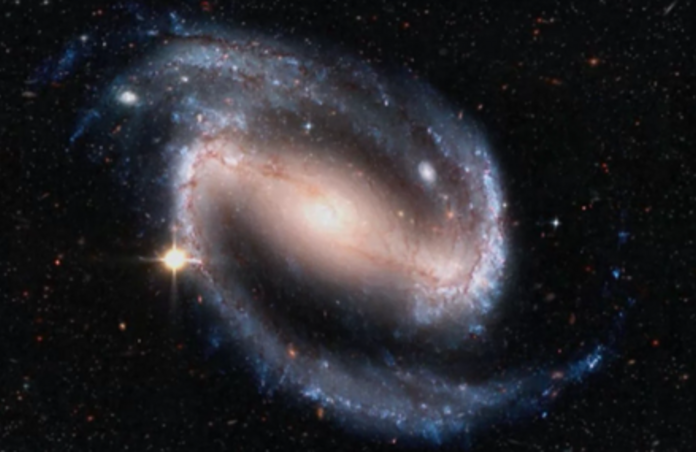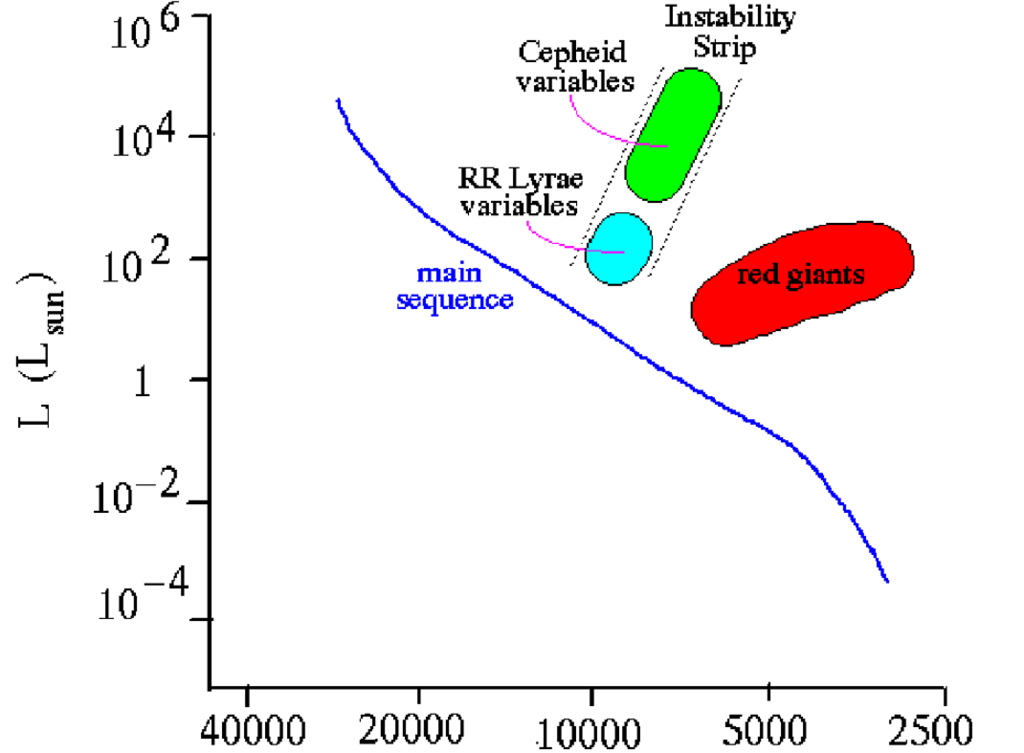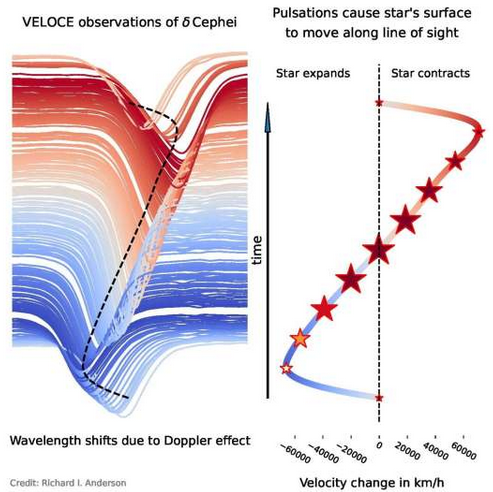VELOCE: A Catalogue of High-Precision Cepheid Radial Velocities

Classical Cepheid variables are a special class of stars that exhibit period variation in their observed brightness. These are typically young population III stars with high masses, usually 3 – 30 solar masses. Their variability is driven by the so-called Kappa mechanism, wherein ionised helium within the stellar envelope becomes a major source of opacity. This causes a build-up of radiation pressure, which causes the star to expand. This expansion of gas causing cooling, and the recombination of electrons into helium. This lowers the opacity, allowing radiation to flow freely again. Gravitational forces take over, and the star contracts again, heating the envelope and restarting the process. The brightness of a star depends on its radius, and so we observe changes in the observed brightness.

These types of stars are crucial in astronomy as we are capable of accurately determining their luminosity, and hence utilise them as standard candles. Their importance arises due to a well-tested, empirical relationship between the luminosity of a Cepheid, and the period of its pulsations. These luminosity measurements can then be used to accurately and precisely measure the distance to these stars, using the inverse square law of light. Being able to so accurately measure stellar distances has a variety of notable applications, such as measuring the distances to other galaxies, allowing us to test Hubble’s law.
Despite their significance, there are many complex factors that may influence the pulsation period of a Cepheid, making accurate measurement challenging. Astronomical data can be quite fickle, as brightness measurements are subject to noise, and defects in cameras and lenses can introduce errors into period measurements. However, comparing these measurements with those obtained through other methods can help drastically reduce these errors by applying stricter constraints.
Recently, Richard Anderson et al released a highly precise and robust database of 258 Cepheid radial velocities, derived from data gathered from 2010 and 2022. While lightcurves, are one way to determine the pulsation period another, more demanding, approach involves analysing the doppler shift of the stellar spectrum. As mentioned, this shift in brightness is primarily due to shift in the envelope radius of the star. While the star will exhibit a systemic Doppler shift in its spectrum, due to the relative motion between it and our solar system, there will also be an additional shift, due to the motion of the stellar surface, as it expands and contracts. This acts as another way to identify the pulsation phase.

The study leverages high-resolution data collected from both hemispheres, obtained using the Hermes spectrograph at Roque de los Muchachos Observatory and Coralie at ESO’s La Silla Observatory. The team carefully processed and corrected data, accounting for the many systematic uncertainties introduced by ground-based telescope systems. Anderson et al. assert that their high-precision instrumentation and meticulous processing pipeline have enabled the most comprehensive description to date of the stellar evolution of these Cepheids. Consequently, their data also serve as valuable benchmarks for comparing Hertzsprung evolution models involving the Kappa mechanism.
The study likewise identifies intriguing processes occurring within their sample of targets. Indeed, many of the stars exhibit unidentified, additional pulsations within their RV plots, that are not accounted for within pulsation models. Co-author, Henryka Netzel ascribes these additional motions to interactions between the various layers of the star, modulating the overall expansion in a way not yet described by theoretical models. This and many other exciting discoveries are further detailed in a variety of upcoming companion papers to this study.
--
Journal Source: R. Anderson et al, VELOcities of CEpheids (VELOCE), Astronomy and Astrophysics, Vol 686, No. A177, (2024), DOI:https://doi.org/10.1051/0004-6361/202348400
Cover Image: NASA SVS
